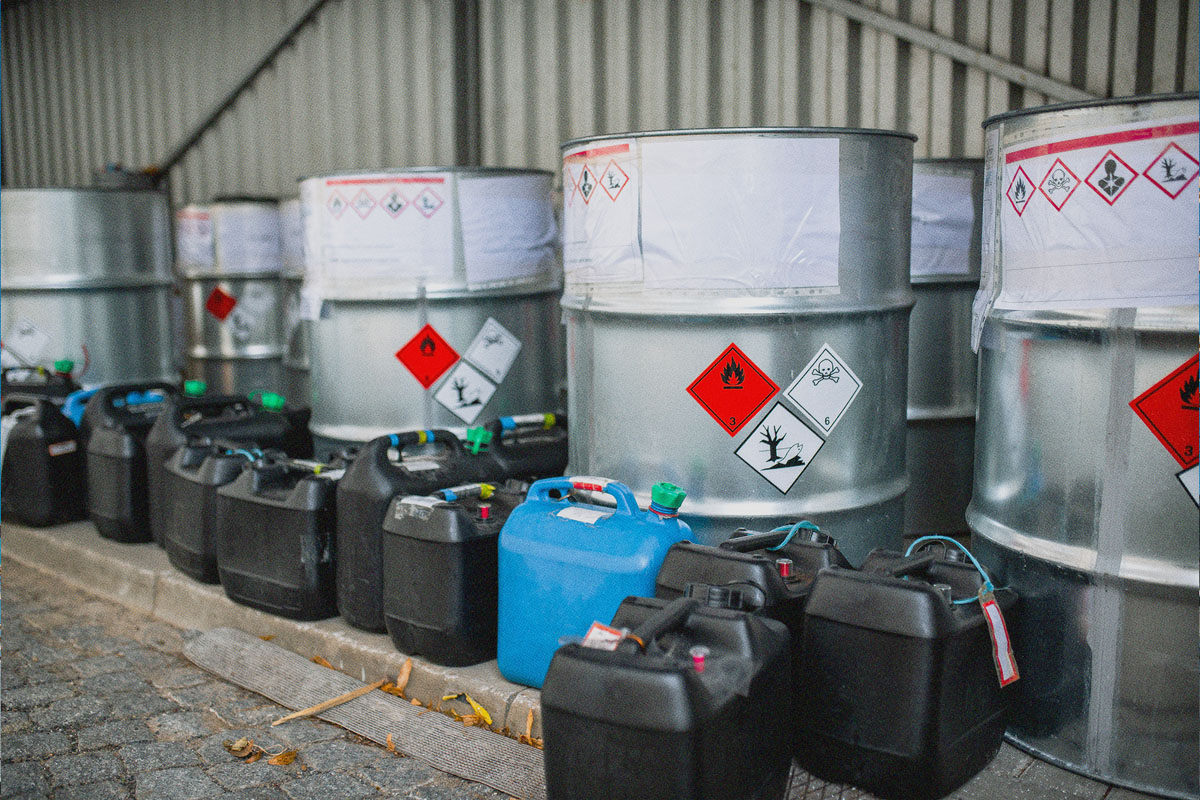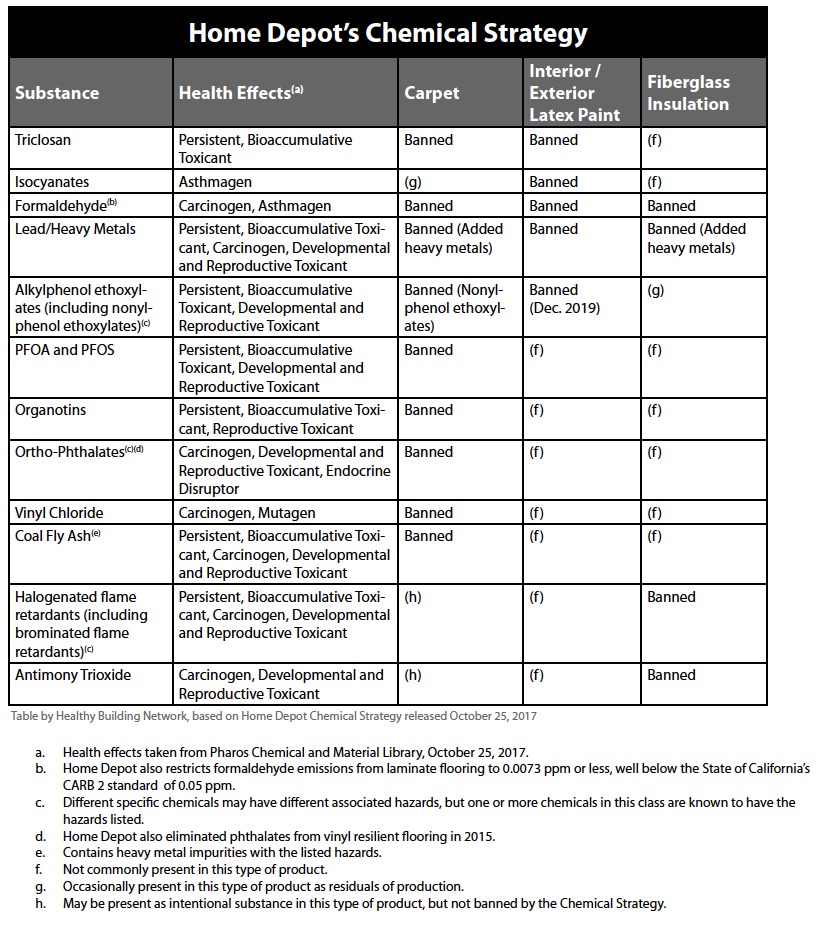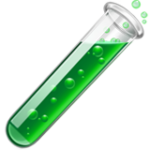 READ HABITABLE’S NEW REPORT
READ HABITABLE’S NEW REPORTDiscover how bisphenols and phthalates, commonly used in plastics for added strength or flexibility, can disrupt hormone function, and learn ways to reduce their use for improved health in this informative video.

Phase 1 of this report is the first of its kind plant-by-plant accounting of the production, use, and releases of chlorine and related pollution around the world. It is intended to inform the efforts of building product manufacturers to reduce pollution in their supply chains.
Chlorine is a key feedstock for a wide range of chemicals and consumer products, and the major ingredient of polyvinyl chloride (PVC) plastic. The report includes details about the largest 86 chlor-alkali facilities and reveals their connections to 56 PVC resin plants in the Americas, Africa and Europe. (The second phase of this project will inventory the industry in Asia.) A substantial number of these facilities, which are identified in the report, continue to use outmoded and highly polluting mercury or asbestos.
Demand from manufacturers of building and construction products now drives the production of chlorine, the key ingredient of PVC used in pipes, siding, roofing membranes, wall covering, flooring, and carpeting. It is also an essential feedstock for epoxies used in adhesives and flooring topcoats, and for polyurethane used in insulation and flooring.
Key findings include:
- In the United States, the chlor-alkali industry is the only industry that still uses asbestos, importing 480 tons per year on average for 11 chlor-alkali plants in the country (including 7 of the 12 largest plants).
- The only suppliers of asbestos to the chlor-alkali industry are Brazil (which banned its production, although exports continue for the moment) and Russia, whose Uralasbest mine is poised to become the sole source of asbestos once Brazil’s ban is in place.
- The US Gulf Coast is the world’s lowest-cost region for production of chlorine and its derivatives. It is home to 9 facilities that use asbestos technology, and some of the industry’s worst polluters including 5 of the 6 largest emitters of dioxin.
- One Gulf Coast facility has been found responsible for chronic releases of PVC plastic pellets into the Gulf of Mexico watershed.
- The US, Russia and Germany are the only countries in this report that allow the indefinite use of both mercury and asbestos in chlorine production.
- The world’s two largest chemical corporations – BASF and DowDuPont – have not announced any plans to phase out the use of mercury and asbestos, respectively, at their plants in Germany.
- Chlor-alkali facilities are major sources of rising levels of carbon tetrachloride, a potent global warming and ozone depleting gas, in the earth’s atmosphere.
- Far more chlorinated pollution, such as dioxins and vinyl chloride monomer, is released from chlor-alkali plants that produce feedstocks for the PVC industry than from plants that produce chlorine for other uses.
Supplemental Documents:

The Future of Petrochemicals report explores the role of the petrochemical sector in the global energy system and its increasing significance for energy security and the environment, highlighting the need for attention from policymakers.
More than 15% of North Americans report an unusual hypersensitivity to common chemical products such as those used in new-home construction. Another 40% may have mild symptoms of which they’re unaware.
This book explores the journey of designing and building a prototype healthy house, aiming to provide a sanctuary for healing and addressing environmental hypersensitivity, serving as a comprehensive guide for those interested in healthier approaches to design, construction, or remodeling.

While attending a 2018 meeting of U.S. EPA’s National Environmental Justice Advisory Council (NEJAC) in Boston, I heard the testimony of Delma and Christine Bennet. They live in Mossville, LA, amidst what is likely the nation’s largest concentration of PVC (polyvinyl chloride) manufacturing facilities. I was there to present the findings of HBN’s inventory of pollution associated with the chlorine/PVC supply chain.
Our study found, among other things, that the Gulf Coast region (which includes Mossville) is home to nine facilities that use outmoded asbestos technology, and home also to some of the industry’s worst polluters: Five of the six largest emitters of dioxins––a long lasting, extremely toxic family of hazardous waste that causes cancer and many other health impacts, are located there. The Bennets reminded the EPA that according to studies by a division of the Centers for Disease Control, Mossville residents have three times higher levels of dioxin in their blood than average Americans, and the dioxin levels found in their yards and attic dust exceed regulatory standards typically used for toxic waste remediations of industrial sites. Even the vegetables in their gardens tested positive for dioxin.
When I think about why we fight so hard to exclude PVC from any palette of green, healthy, or sustainable building materials, I think first of people like Delma and Christine. I then think about the many non-profits, government agencies, and private enterprises dedicated to recycling. Way back in the 1990’s, the industry Association of Plastic Recyclers declared PVC a contaminant to the recycling stream. A generation later, a 2016 study by the Circular Economy evangelist Ellen MacArthur Foundation called out PVC packaging for global phase-out, citing low recycling rates and chemical hazard concerns. Much of the concern about PVC packaging is driven by worries about ocean pollution. HBN’s study found that at least one U.S. PVC manufacturer is routinely dumping tons of PVC pellets into local waterways and refusing to stop even after being ordered to do so by the state of Texas.
The list goes on. Our report documents the types of industrial pollution in addition to dioxin that could be reduced or avoided by a switch to more recyclable plastics that are not made with the chlorine that is an essential ingredient of PVC, including ozone depleting and potent global warming gasses. HBN’s earlier studies have documented the hazards posed by legacy pollutants that are returning to our consumer products in recycled PVC content––heavy metals such as lead, and endocrine-disrupting plasticizers known as phthalates.

There is a better way.
There is virtually no use of PVC in building products that could not be replaced with another plastic or other material. Indeed, from siding, to wallpaper, to window frames, PVC has displaced materials that are more recyclable, such as aluminum and paper. Because the industry is not held accountable for the environmental health damages wrought in places like Mossville, PVC has artificially low costs that present barriers to entry, or inhibit market expansion of less hazardous, more sustainable alternatives.
That is why PVC should not be part of any building, or any building rating system, that claims to advance environmental and health objectives. It’s not green. It’s not healthy. It’s not sustainable. It’s just cheap––for us. Because folks like Delma and Christine Bennet pay the true cost.

Know Better
Learn more about the implications of chlorine as a feedstock in plastics in HBN’s Chlorine and Building Materials report.
As noted in Healthy Building Network’s(HBN) Chlorine and Building Materials report, chlorine production is a major source of releases of carbon tetrachloride, a potent global warming and ozone depleting gas as well as a carcinogen.
As the report reminds us, it’s important to consider not only the use-phase impacts of building products, but the entire life cycle, including primary chemical production that’s several steps back from final product manufacture.
Blowing agents are used in plastic foam insulation to create the foam structure and also contribute to the insulative properties. Over the years, manufacturers have cycled through a range of fluorocarbons as each prior class is phased out due to environmental concerns – from ozone depleting chlorofluorocarbons (CFCs) to less ozone depleting hydrochlorofluorocarbons (HCFCs) to the non-ozone depleting but high global warming potential hydrofluorocarbons (HFCs) currently common in many types of foam insulation. Manufacturers have now begun the latest shift to next generation, low global warming potential hydrofluoroolefins (HFOs). For extruded polystyrene (XPS), this translates to a shift from commonly used HFC-134a with a global warming potential (GWP) of 1,430 to HFO-1234ze with a GWP of six.2
The summary of these chemical transitions only tells part of the story. While HFOs do not directly deplete the ozone layer or significantly contribute to global warming, many HFOs use carbon tetrachloride (CCl4) as a chemical feedstock. This includes HFO-1234ze, the replacement for HFC-134a (which does not use CCl4) in many applications.3

How is it that this ozone depleting substance is still in use? Many uses of carbon tetrachloride were phased out in 1995, under the terms of the Montreal Protocol to protect the ozone layer. But the Montreal Protocol phase-outs exempted the use of CCl4 as a chemical feedstock, under the assumption that emissions would be minor.4 However, carbon tetrachloride “is not decreasing in the atmosphere as rapidly as expected” based on its known lifetime and emissions, according to a 2016 report on the Mystery of Carbon Tetrachloride. The authors of this report concluded that emissions of carbon tetrachloride during its production, and fugitive emissions from its use as a chemical feedstock, have been significantly unreported and underestimated.5
Production of carbon tetrachloride is likely to increase as industry replaces HFC blowing agents (and refrigerants), most of which aren’t produced with carbon tetrachloride, with HFOs that do use CCl4 as a feedstock.[6] With increased production and use of carbon tetrachloride, increased emissions are expected – and that’s bad news for the earth’s recovering ozone layer.
We recommend against the use of plastic foam insulation whenever possible, but if you do use it, some products are available that use other, less impactful, blowing agents, including hydrocarbons and water. For more recommendations about preferable insulation from a health hazard perspective, review our product guidance at informed.habitablefuture.org.
SOURCES
- According to US Toxics Release Inventory (TRI) data from 2012 to 2015, half of the 10 leading sources of carbon tetrachloride releases were chemical complexes with chlor-alkali plants. Reporting from other countries is non-existent or incomplete. The European Pollutant Release and Transfer Register (E-PRTR) contains no reported emissions of carbon tetrachloride from chlorine plants in the European Union between 2012 and 2016. Manufacturers are required to report carbon tetrachloride releases in excess of 100 kg per year, however, European scientists tracking carbon tetrachloride emissions say the industry is likely not reporting emissions. A 2016 report estimated that the chlor-alkali industry worldwide was responsible for about 10,000 metric tons of unreported carbon tetrachloride releases, or about 40% of all unreported carbon tetrachloride releases.
- “Comments to the U.S. Environmental Protection Agency (EPA) on the Scope of Its Risk Evaluation for the TSCA Work Plan Chemical: CARBON TETRACHLORIDE (CTC) CAS Reg. No. 56-23-5.” Safer Chemicals, Healthy Families; Environmental Health Strategy Center; Healthy Building Network, March 15, 2017.; “Common Product: XPS Insulation (Extruded Polystyrene).” Pharos Project. Accessed February 1, 2017. https://pharos.habitablefuture.org/common-products/2078867.; “Substitutes in Polystyrene: Extruded Boardstock and Billet.” United States Environmental Protection Agency: Significant New Alternatives Policy (SNAP). Accessed July 26, 2018. https://www.epa.gov/snap/substitutes-polystyrene-extruded-boardstock-and-billet.Global Warming Potential (GWP) defined — Certain gasses, commonly referred to as “greenhouse gasses”, have the ability to warm the earth by absorbing heat from the sun and trapping it in the atmosphere. Global warming potential is a relative measure of how much heat a given greenhouse gas will absorb in a given time period. GWP numbers are relative to carbon dioxide, which has a GWP of 1. The larger the GWP number, the more a gas warms the earth. Learn more about interpreting GWP numbers at www.epa.gov/ghgemissions/ understanding-global-warming-potentials.
- Liang, Q., P.A. Newman, and S. Reimann. “SPARC Report on the Mystery of Carbon Tetrachloride.” Stratosphere-troposphere Processes and their Role in Climate, July 2016. https://www.wcrp-climate.org/WCRP-publications/2016/SPARC_ Report7_2016.pdf.
- Vallette, Jim. “Chlorine and Building Materials: A Global Inventory of Production Technologies, Markets, and Pollution – Phase 1: Africa, The Americas, and Europe.” Healthy Building Network, July 2018. https://habitablefuture.org/resources/chlorine-building-materials-project-phase-1-africa-the-americas-and-europe/.
- Liang, Q., P.A. Newman, and S. Reimann. “SPARC Report on the Mystery of Carbon Tetrachloride.” Stratosphere-troposphere Processes and their Role in Climate, July 2016. https://www.wcrp-climate.org/WCRP-publications/2016/SPARC_ Report7_2016.pdf.
Home Depot today announced a chemical hazard avoidance policy that will prohibit numerous toxic chemicals in paints, carpeting, flooring and fiberglass insulation products.
The Home Depot Chemical Strategy, included in its 2017 Responsibility Report, targets a range of chemicals known or suspected to cause cancer, mimic and disrupt hormone systems, and impair brain function. The retailer’s policies, for certain product categories, far exceed the chemical restrictions of LEED and most product certifications in these categories. The world’s largest retailer of building products credited HBN’s “guidance on priority chemicals and innovation” as it adopted many of the recommendations made by HBN and other environmental health groups in a dialogue begun in 2014.
By applying its chemical strategy to all products in target categories, Home Depot makes important strides toward equity in the green building movement. It tracks many of the recommendations HBN provides to the affordable housing community in our HomeFree initiative. Because it impacts products at all price points, not just premium products and not just those that qualify for the retailer’s Eco-Options program, the policy ensures that all contractors and do-it-yourself customers get healthier products regardless of the brand purchased, and regardless of whether or not the product has been certified “green.” One of the qualifying products, a flat sheen paint, is the first “zero VOC” paint priced under $20 per gallon.[1] “We’re not just sourcing new healthier products, we are striving to improve our current assortment of the products we already sell,” Ron Jarvis, Home Depot Vice President of Merchandising and Sustainability, told HBN.


Home Depot’s most significant advances are in reducing toxic hazards in carpets and paints. The new carpet policy implements two major recommendations of HBN’s newest report, Eliminating Toxics In Carpet: Lessons For The Future of Recycling. published last week. As we reported, Shaw Industries – the country’s largest carpet manufacturer – recently stopped using fly ash from coal-fired power plants as filler. Today, Home Depot announced that fly ash, which contains toxic heavy metals, is “excluded from indoor wall-to-wall carpet in our U.S. and Canada stores.” Home Depot also announced its carpet does not contain several other chemicals that HBN has prioritized for elimination, including ortho-phthalates and organotins used in carpet backings.
Home Depot will also eliminate a class of toxic chemicals from paints called alkylphenol ethoxylates (APEOs). These chemicals, which are present even in low VOC paints, are surfactants, which help different types of material mix together well, and are coming under increased scrutiny as hormone disrupting chemicals with health effects ranging from breast cancer, reproductive disorders and obesity. They are mostly phased-out in Europe and Japan, but still common in the U.S., even though the EPA has identified over 200 “safer surfactants” to replace them.[2]
Today’s announcement is the next step on a long road that started with Home Depot’s 2015 move to eliminate phthalates from vinyl flooring. Much work lies ahead. For example, the company noted that it was not removing methylene chloride paint strippers from its shelves, a major objective of the national consumer campaign Mind The Store. The retailer’s hazard avoidance policy does not address some important problems even within the building product categories in its scope, and does not apply to many other high-impact building product categories. Regrettably, full public disclosure of all product ingredients is not required.
However, the hazard avoidance approach of the Home Depot Chemical Strategy signals fundamental, permanent and systemic improvement in the building products industry, and is a strong step towards health equity in building products. It leans toward a future when “healthy products” are not sold for a premium or as specialty items, and any product on the shelf meets the reasonable consumer expectations that it is healthy for people and our planet.
The Home Depot 2017 Responsibility Report can be found here:
https://corporate.homedepot.com/newsroom/infographic-2017-responsibility-report
SOURCES
- Glidden Premium flat sheen white begins at $17.97: https://www.homedepot.com/b/Paint-Paint-Colors/Glidden-Premium/Interior-Paint/N-5yc1vZcaw8Z55aZ1z0q3xf.
- While there are some paints available in the US that are free of these chemicals, including product lines from Benjamin Moore and Sherwin Williams. Home Depot is the first major paint seller to prohibit them in all formulations offered for sale, affecting most of the formulas sold today and all sales by December 2019.

Healthy Building Network’s report on post-consumer carpet feedstocks calls for eliminating over 40 highly toxic chemicals in carpets that threaten public health and impede recycling. These toxics are known to cause respiratory disease, heart attacks, cancer, and asthma, and impair children’s developmental health.
The report outlines strategies to protect public health and the environment by improving product transparency, eliminating dangerous chemicals from carpets, and increasing carpet recycling rates. It also reveals surprising efforts in the industry to remove many of these toxic substances from carpet design.

Building products incorporating antimicrobial additives are becoming increasingly prevalent. Paints, and other touchable surfaces such as countertops, and virtually any product considered as an interior finish may contain one or a combination of antimicrobials. These agents are considered pesticides, but their identity—and related hazards—can be difficult for the average person to discover. This lack of transparency creates a hurdle for the informed selection of products with reduced negative impacts.
No evidence yet exists to demonstrate that products intended for use in interior spaces that incorporate antimicrobial additives actually result in healthier populations. Further, antimicrobials may have negative impacts on both people and the environment. This paper, prepared by Perkins&Will in partnership with HBN, aims to present current information about reported or potential health and environmental impacts of antimicrobial substances as commonly used within the building industry, and to assist architects, designers, building owners, tenants, and contractors in understanding those impacts.
In response to growing concerns over COVID-19, Healthy Building Network (HBN) and global architecture and design firm Perkins and Will reexamined and reaffirmed the conclusions and recommendations of this white paper.

Asphalt (also known as asphalt concrete, bitumen, or road tar) is the most common paving material by far, accounting for a 92 percent share of the 2.5 million miles of roads and highways in the United States. Reclaiming and reusing asphalt has many benefits, including waste prevention, reduction of greenhouse gas emissions, and lower lifecycle impacts compared to virgin asphalt material use.
Keys to increasing the recycling of asphalt and its attendant environmental benefits include simplifying the designs of asphalt mixes, reducing toxic additives in production, tracking materials from production through use and recycling, testing incoming materials for contaminants, and avoiding the addition of cutback solvents and other toxic rejuvenating agents.

 Health
Health Pollution
Pollution Climate Change
Climate Change